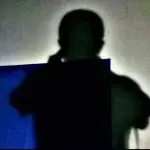The film about the Nazi massacre of Jews is abundant, ranging from the vivid and horrifying memories depicted in "The Pianist" to the faint glimmer of light in the darkness portrayed in "Schindler's List" and the celebration of love's greatness in "Life is Beautiful." Despite these notable works, "Son of Saul" takes a unique approach, offering an unprecedented perspective and style. It doesn't glorify heroes or reflect on history; instead, it aims to convey that the terror of that era is something we can never truly comprehend. This film brings us one step closer to that understanding.

"Son of Saul" is primarily composed of long takes, with occasional shifts to the protagonist's subjective perspective for brief breaks. The camera remains focused on the main character's head throughout, with the cinematographer shouldering the camera, creating an intense and breathless journey within the concentration camp. The audience becomes a third-person shooter in a virtual game, accompanying the protagonist as a camp companion. The use of a 40mm lens with shallow focus eliminates traditional depth of field, creating a sharp focus on the foreground while pointing sharply to the atrocities happening in the blurred background. In other words, history swirls at the edge of the blurry frame, torn apart beyond the frame.

Under the guidance of this shallow focus and long-take aesthetic, the film achieves another level of shock within its limited production budget. It starts from an extremely close perspective, resembling an individual's perceptual experience, creating what seems like the narrowest view but offering the most realistic viewing experience. The audience witnesses not an orderly extermination factory from a god-like perspective, but a bloody memory stemming from an individual's perspective.
The film prompts a reconsideration of how people "view" the Holocaust. It meticulously depicts the world inside the concentration camp: people eating, sleeping, leading Jews into gas chambers, mass graves, transporting and cremating bodies. It portrays life in a closed, sweatshop factory in modern society, where people struggle day after day in numbness and inertia. Until death becomes the norm, and being alive becomes the exception.
The movie starts with a deliberately blurred view of Saul walking slowly from a distance until the camera approaches, gradually revealing clarity. From then on, the focus remains on Saul's face or the back of his head, with other elements mostly blurry. This strongly implies that the film's focus is not on the bigger picture or history but on Saul as an individual, inviting the audience to experience everything that happens in Auschwitz through him.

Saul, a relatively strong Jewish man in the camp, temporarily avoids death by working as a laborer in the gas chamber. The absence of any musical score, relying solely on the long-take tracking shots, allows the audience to traverse Auschwitz, experiencing its true nature. The intentionally narrow aspect ratio intensifies the sense of confinement and oppression. People are lured with work, bread, and coffee, reminded to remember the numbers assigned to their belongings. Yet, when the iron door closes, the deafening and chaotic cries that follow are not the screams of a horror film; they are the genuine cries of a group facing terrifying collective death. As the cries subside, bodies and bloodstains cover the ground, with Saul vigorously cleaning blood and dragging bodies, producing harsh, scraping sounds against the floor. The crematorium, overflowing with ashes, transitions to direct shootings at mass graves, accompanied by the constant cries of the crowd forced towards the pits. Previous films about Nazi concentration camps, while brutal, often maintained an orderly and cold cruelty. In contrast, "Son of Saul," with its intentionally blurry and unfocused visuals, reveals a terror and evil that words or visuals cannot adequately express. It presents the most realistic depiction of a hellish existence.
Despite being a fellow Jew who could face the same fate, Saul's face shows minimal expression. Whether it's solemnity or numbness, the blurry surroundings seem to reflect his world, or rather, his inner world. The occasional focus on specific objects is what Saul cares about. He is not concerned with the plight of his compatriots or the progress of the secret resistance organization; instead, he is focused on his "son."

Whether this boy is truly his son is not explicitly stated, and it is not crucial to the film. The plot itself has confusing elements, such as the details of the resistance organization's operations, reflecting Saul's situation and the audience's intended experience. Auschwitz, an extermination camp with Jews from various parts of Europe, showcases linguistic diversity, with Saul speaking Hungarian, the resistance organization using Yiddish, locals speaking Polish, and another camp's rabbi using Greek. Just in terms of language, it is a bewildering and confusing world. Saul is just one of the enslaved in this camp, unable to fully understand everything happening around him. His focus is solely on the indescribable terror in front of him. By using a blurred perspective and a vague plot, the film makes the audience share Saul's numbness or an even more indescribable feeling, providing an experience completely different from the typical "god-like perspective" in movies.
In this horrifying and distorted human hell, thoughts and understanding cannot be assumed under normal circumstances. In this unimaginable situation, Saul obsessively wants to bury his "son." He goes through countless hardships, disregarding the safety of his companions, abandoning the tasks assigned by the resistance organization, and even risking his own life to exchange for a rabbi who will be executed. Firstly, we have no right to condemn him; not everyone has the obligation to resist or survive in such an environment. Secondly, this seemingly incomprehensible obsession can be understood as Saul's spiritual refuge. Imagine the environment he is in, the work he does, and his dark fate. In such an extremely distorted psychological situation, even if he probably doesn't have a son, the so-called "Son of Saul" is his last pillar and appeal in his heart, perhaps the final reliance on faith, where God resides. Otherwise, why would he go to such lengths to find a rabbi? Sadly, he finds a false rabbi who recites prayers incorrectly, deceiving his fellow compatriots for survival. This scene symbolizes that in this dark and lightless world, their God is also dead.
From beginning to end, the film is an endless purgatory, with no chance to catch one's breath. The Polish local boy at the end likely has no connection to Saul, but seeing Saul running freely, a smile finally appears on the boy's face. It is as if God has finally emerged, tearing open a glimpse of light in the darkness. Saul's "son" or spiritual refuge seems to have finally found redemption, and may his soul rest in peace.























































Share your thoughts!
Be the first to start the conversation.